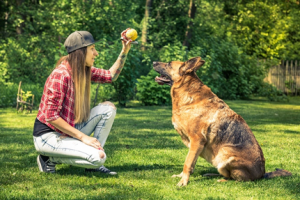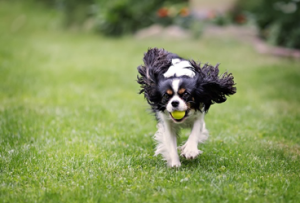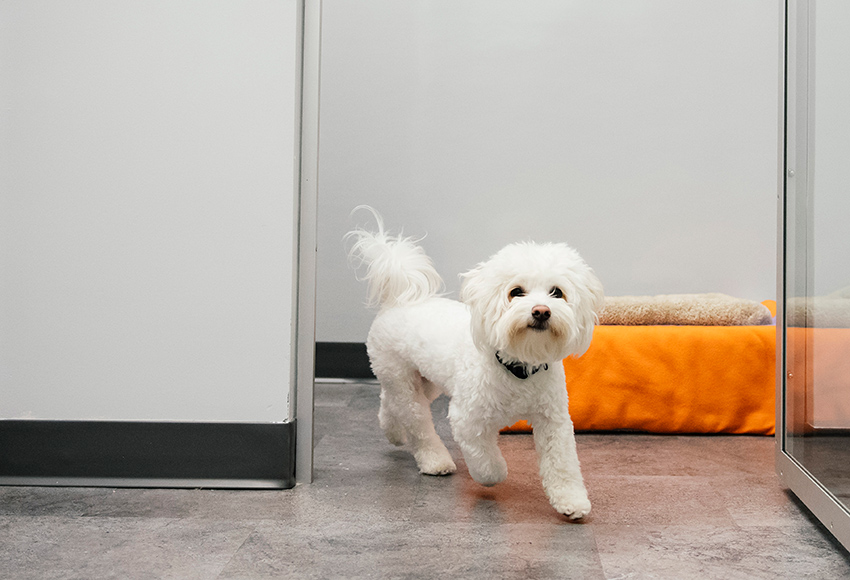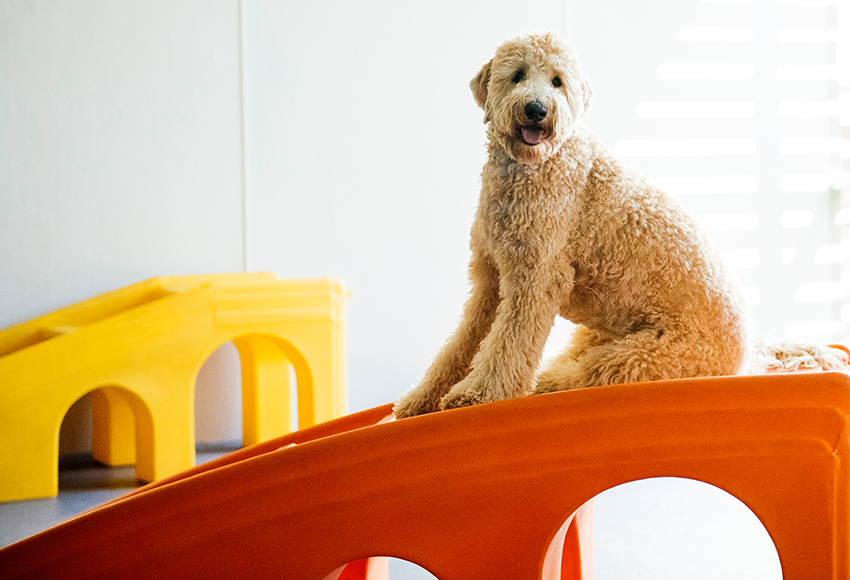Dog Training: 5 Commands Every Dog Should Know
As many dog owners know, there are many advantages to having a trained dog When your dog understands a few basic commands, it is immensely helpful whenever you’re faced with dog behavior problems. Where do you start with dog training, though? There are plenty of dog training group classes out there, but when you work with your dog yourself, it enhances the bond with your dog, which can help in addressing any future issues. Training can even become a fun activity for you and your dog! Check out these 5 essential commands all dogs should know:
Training Your Dog to Sit
This is one of the most common and simplest dog training commands to teach. This makes it a good place to start whether you have an adult dog or a puppy. Here’s a quick sequence that will help:

- Hold a treat near your dog’s nose.
- Slowly move your hand up. This will allow the dog’s head to follow the treat, causing them to lower their bottom.
- When your dog is in a sitting position, say “Sit,” and give them the treat.
- Be sure to add in a little affection for a great positive reinforcement combination.
Repeat this sequence a few times each day, and your dog will master this command in no time. Once they have mastered this command, start using it before mealtime, when you leave for walks, and any other time you would like your dog to remain calm.
If You Train Them, They Will Come

“Come” is a simple command that will help keep your dog out of trouble. This is essential for any dog who is a running risk when you lose grip on the leash or accidentally leave a door open. While this dog training command is a little more complicated, steady work and regular practice will help to keep your dog safe.
- Put on your dog’s collar and leash.
- Lower yourself to the dog’s level at leash-distance, and say “Come” while gently pulling the leash towards you.
- Once the dog is close to you, give them some of that positive reinforcement with a treat and affection.
- Note: You want to do this gently because it becomes a suggestion, whereas pulling too hard on the leash will be jarring and potentially cause a more negative association with the leash.
When you and your dog are more practiced with this command, try removing the leash and practicing without the restriction. Be sure to practice in a safe and enclosed area when you reach this stage of your training.
Mastering Down Dog
This command is a bit more difficult. This is because “down” is an inherently submissive posture for dogs. Help your dog feel more comfortable by maintaining a relaxed, positive environment. This is particularly helpful with anxious or scared dogs.
- If your dog has a favorite treat that is particularly pungent, use it with this training and hold it in a closed fist.
- Hold the fist up to your dog’s nose. When they start to sniff your hand, move it down to the floor so that they follow.
- Slide your hand along the ground in front of them away from them. This will encourage their body to follow their head.
- When they reach the down position, say “Down” and follow that with your positive reinforcement.
This one may take a little longer, so be sure to repeat it regularly. Your dog might try to sit up or lunge at your hand. If they do this, simply say “No” and pull your hand away. Encourage your dog at each step as your dog takes the correct position. DO NOT push your dog into the position. This won’t necessarily help them figure out the command any faster and can be counterproductive in dog training.
Stay: More Complex Dog Training
Before you attempt this command with your dog, be sure your dog is a “Sit” Master. That simple command is a must for this next exercise.
- Ask your dog to “Sit.”
- Open the palm of your hand and stretch it out in front of you in a “stop” gesture, and say “Stay.”
- Take a few steps back. If your dog stays, provide some positive reinforcement with a treat and some affection.
- As you continue to practice, increase the number of steps you take before rewarding them.
- Note: Even if your dog only stays for a few seconds, be sure to reward them. Positive reinforcement and consistency will help them learn.
This command can be hard for dogs because it’s an exercise in self-control. We humans have a tough time with that, so don’t be discouraged if your dog needs a lot of practice. This can be especially true for high-energy dogs and puppies who have a constant desire to be on the move.
Leave It: A Master Class in Dog Training

This challenging command is sure to keep your dog safe when their curiosity gets the best of them. The goal is to teach your dog that ignoring these things will get them something even better.
- Hold a treat in both hands and close your fists.
- Show your dog one of your fists and say “Leave it.”
- Allow your dog to sniff, lick, paw, bark, etc to try to get it, but ignore the “bad behavior.”
- Once your dog stops trying, give them the treat from your OTHER hand.
- Repeat this sequence until your dog moves away from the first fist as soon as you say “Leave it.”
- Next, increase the challenge by only giving your dog the treat when they move away from the first fist AND look up at you.
When your dog has mastered this, you can take it to the next level by using two different types of treat and slowly introducing the lesser treat over time. Don’t rush this process, though. Remember that you are asking a lot of your dog whenever you reach advanced dog training methods.
These five commands may seem simple, but they are an essential part of dog training. They will keep your dog safe and improve your communication with them. Each of these dog commands are well worth your time and effort. But remember, you need to be in the right space for a dog training session, too. Only start a session if you feel up to the patience and calm but assertive energy required.
For more training tips, visit dogtopia.com/blog






